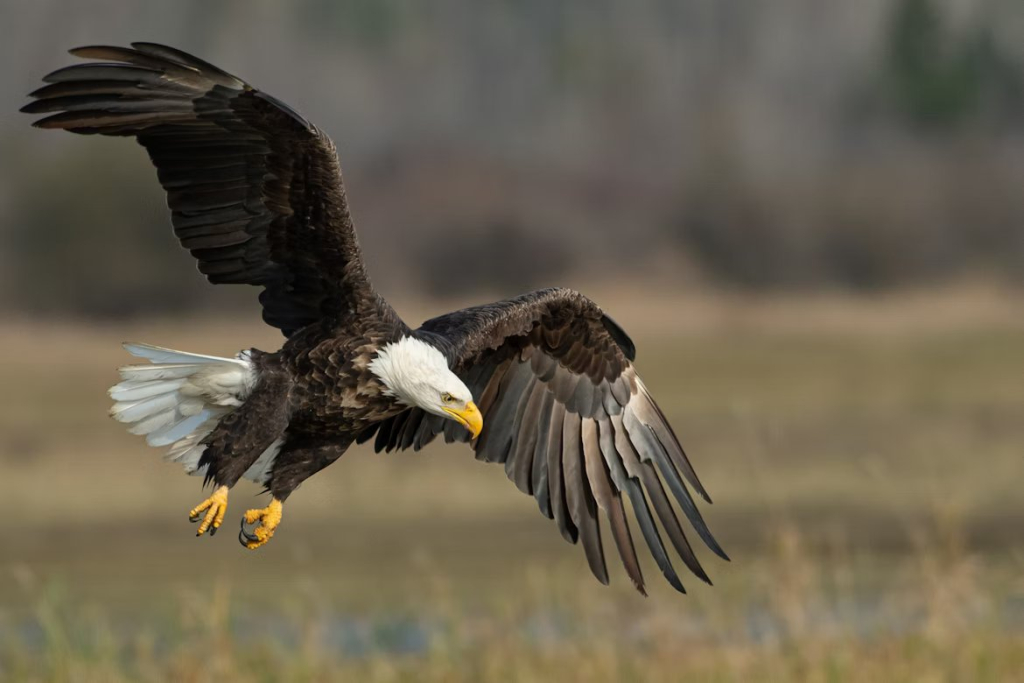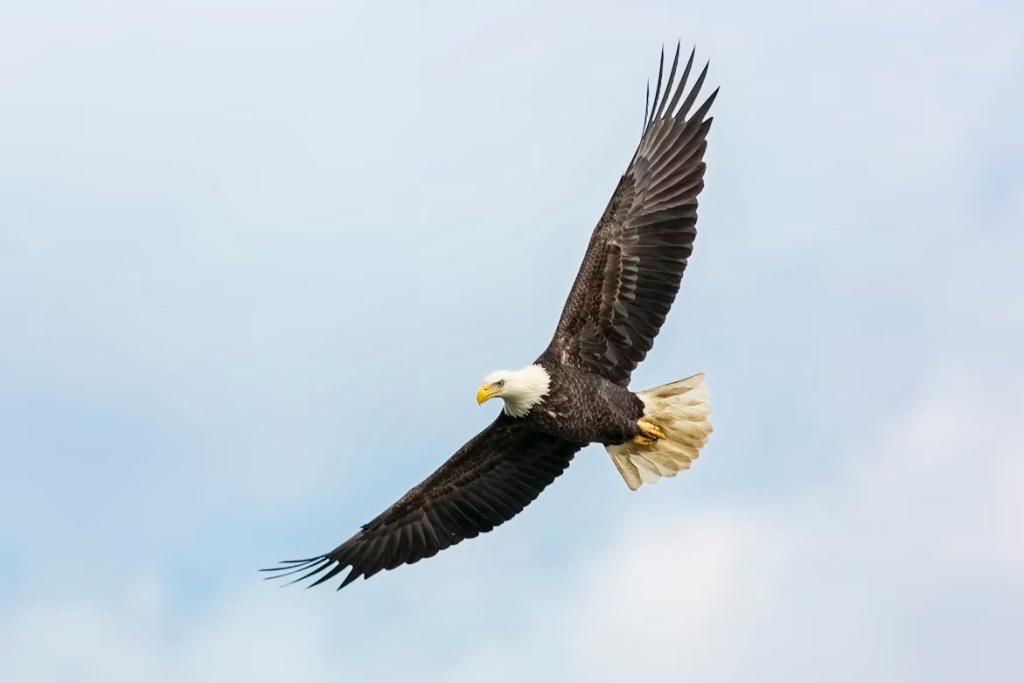National Save the Eagles Day holds particular significance in the Philippines, focusing on the conservation efforts for the critically endangered Philippine eagles. This day is a crucial reminder to protect these majestic birds and their habitats.

The golden eagle, a symbol of strength and freedom, is also highlighted in the context of global eagle conservation. With the eagle population facing numerous threats, such as habitat loss and illegal hunting, raising awareness and implementing measures to safeguard these iconic species is imperative.
By observing Eagles Day, the Philippines emphasizes its commitment to preserving the natural heritage represented by the Philippine Eagle and contributes to the broader global initiative to secure the future of eagle populations worldwide.
National Save The Eagles Day
National Save The Eagles Day takes on special significance with the active involvement of organizations like the Bergen County Audubon Society, which is vital in spearheading conservation efforts for these majestic birds.
This day serves as a rallying point for communities to come together, raise awareness about the challenges faced by eagles and promoting initiatives to protect their habitats. Through its dedication to environmental stewardship, the Bergen County Audubon Society exemplifies the commitment required for successful conservation.
Audobon centers are community-based science programs for bird enthusiasts, at grass roots level, spread all over the world. Part of its advocacies is sustaining endangered bird species and championing positive conservation experiences in a local community.
Eagle parks, designed to provide safe spaces for these iconic birds, become focal points in the ongoing efforts to ensure the well-being and sustainability of eagle populations. National Save The Eagles Day thus stands as a testament to the collaborative endeavors of organizations like the Bergen County Audubon Society and individuals working tirelessly to safeguard the future of these awe-inspiring creatures.
Majestic Birds
Majestic birds, particularly golden eagles, and the bald eagle species captivate the imagination with their soaring prowess and distinctive features. The golden eagle, adorned with striking golden feathers, symbolizes strength and grace.
These feathers, sought after for their beauty, have unfortunately made golden eagles susceptible to illegal trade. Conservation efforts are crucial to protecting eagle populations and preserving the integrity of their habitats. Similarly, the bald eagle species, with its iconic white head and majestic presence, holds a special place in the hearts of many.
The Golden Eagle
The golden eagle, belonging to the bird family Accipitridae, is one of the popular birds of prey in the Northern Hemisphere. They have generally dark brown head feathers with a lighter golden brown plumage around its necks. The golden eagle are known for their speed and agility, powerful feet and sharp talons which they use to hunt different preys. Their best nesting sites can be found in high places to which they return to lay eggs for a couple of nesting season.
The Bald Eagles
Also known as a sea eagle, only pairs with just two species and mostly found near bodies of water with abundant food supply and trees for nesting. Bald eagles, contrary to many assumptions, are not really bald. The name came from the etymology of the word, “white headed.”
These magnificent creatures serve as powerful symbols of freedom and resilience, underscoring the importance of environmental conservation to ensure the continued existence of these awe-inspiring birds.
Bald Eagle removed from endangered list

In a significant conservation milestone to save eagles, bald eagles, once on the brink of extinction, have been successfully removed from the endangered species list. The remarkable recovery of bald eagles is a testament to the effectiveness of the Endangered Species Act, highlighting the positive impact of concerted conservation efforts.
Once facing severe threats such as poor habitat protection and pesticide exposure, the population of bald eagles has rebounded, leading to their removal from the endangered species list. This achievement reflects the resilience of these iconic birds.
It underscores the importance of continued vigilance and conservation measures to ensure the long-term well-being of bald eagles and other species on the brink of endangerment.
What to know about Eagles
What do you do if you see an eagle nest?
If you come across a bald eagle’s nest, it is crucial to approach with caution and respect for these magnificent birds and their environment. Eagles are known to be sensitive to disturbances, especially during nesting seasons.
To ensure the well-being of the eagles, it is recommended to maintain a considerable distance from the nest, using binoculars for observation instead of getting too close.
Avoid loud noises, sudden movements, or any actions that might cause stress to the birds. Respecting the natural habitat and maintaining a safe distance allows eagles to nest peacefully and contributes to the overall conservation of these awe-inspiring birds.
Threats to Eagles
Eagles face various threats that impact their populations and well-being. Habitat loss due to urbanization, deforestation, and industrial development is a significant concern. As their natural habitats shrink, eagles may need help finding suitable nesting sites and prey.
Pollution
Apart from community health risks, Pollution, particularly from pesticides and chemicals, also poses a threat to the eagles. These substances can contaminate water sources and prey, leading to eagles’ health issues and reproductive challenges.
Illegal activities
Illegal activities like poaching and hunting, driven by the desire for eagle parts or feathers, further jeopardize their populations.
Collisions
Collisions with power lines and wind turbines also pose risks, especially for eagles navigating expansive territories.
Climate change
Climate change adds new problems, affecting prey distribution and breeding seasons. Conservation activities are critical to mitigating these challenges and preserving the survival of eagle species globally.
Do eagles mate for life?
Many eagle species, including the bald eagle and golden eagle, are known for forming long-term pair bonds and often mate for life. However, not all eagles exhibit this behavior; some may form monogamous pairs for shorter periods. Factors like environmental conditions and breeding success can influence their mating patterns.
What do eagles eat?
Eagles are carnivorous birds of prey, and their diet primarily consists of meat. They are opportunistic hunters and scavengers, feeding on various prey depending on their size and availability.
Common eagle prey includes fish, birds, small mammals, and sometimes carrion. Fish eagles, such as the bald eagle, are adept at catching fish from rivers and lakes. With their powerful talons, golden eagles may hunt larger mammals like rabbits and ground squirrels.
How fast can eagles fly?
30 to 60 miles per hour
Eagles are powerful and agile flyers, and their speed can vary among species. On average, eagles can fly at speeds ranging from 30 to 60 miles per hour (48 to 97 kilometers per hour) during normal flight.
However, some species, such as the golden eagle, can reach much higher speeds when hunting or in pursuit of prey.
150 miles per hour
Golden eagles, for example, have been recorded diving at speeds exceeding 150 miles per hour (241 kilometers per hour) while pursuing prey. The speed of eagles depends on factors such as their size, species, and the purpose of their flight, whether for hunting, migration, or territorial defense.

Celebrate Life’s Milestones in Camella!
Make unforgettable memories in a Camella home.
Our communities are designed to elevate your living experience.


